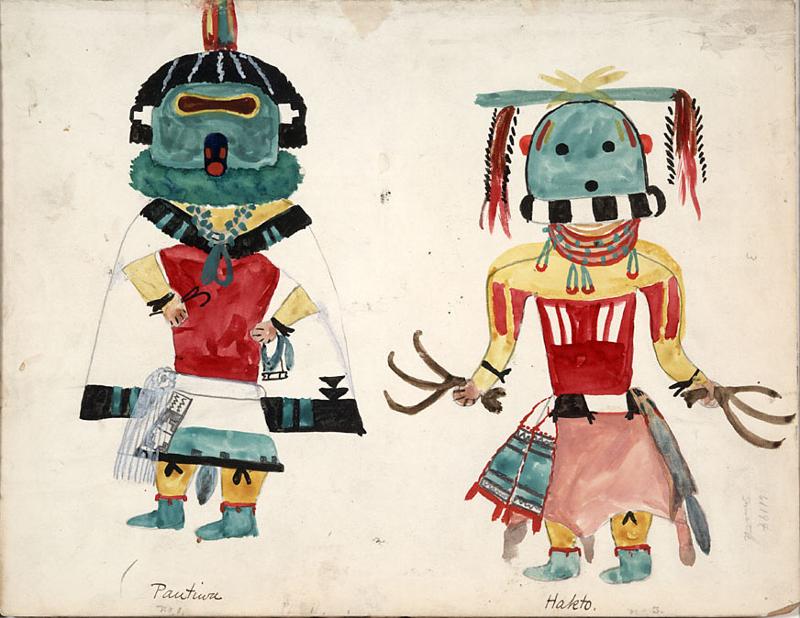Worldview
In Zuni belief, there are two categories of people: the raw people and the cooked people. Raw people are supernatural beings who are capable of taking many forms, including that of the human form. Cooked people, also known as the daylight people, are humans.
Two important supernatural beings for the Zuni are the twin boys, who are alternatively called the Beloved Twins, the Twin War Gods, or the Ayahuda. These twins, who were created in the beginning of time by Sun Father, are credited with leading the people out of the underworld to the earth. Once on earth, the people split into groups and spread out across the land. One of these groups were the Zuni, who were assisted in the many difficulties they encountered during this migration by the War Gods. Once the Zuni reached Corn Mountain their migrations stopped and they settled there. Upon death, the Zuni return to the land of the underworld via the Zuni River, which serves as a pathway connecting the dead to Katsina Village, which is located beneath the Zuni Salt Lake.
While the number four—representing the four cardinal directions-- had major ideological significance for the Hopi, among the Zuni the number six was important. For the Zuni, there are six, not four, directions; these are north, south, east, and west, as well as the zenith and nadir. This is why, for example, there are six katsina groups among the Zuni.The most important of the Zuni ceremonies is the Shalako ceremony, held near the winter solstice and following the fall harvest. Shalakos are supernatural beings (a type of katsina) that serve as couriers for the katsinas that live in the underworld Katsina Village. During the Shalako ceremony, which is held to give thanks for the fall harvest and to bring blessings and well being to the people, six costumed men impersonate the shalako beings by wearing impressive, twelve-feet tall costumes. Each of the six Shalakos parades across the river and into the town in a ceremony that lasts all night.
|
|
|
|
Shalako Ceremony, 1898 Source - https://www.flickr.com/photos/internetarchivebookimages/14596359678/
|
Drawing of Pautiwa (Zuni Sun God) Kachina and Hakto (Zuni Wood Carrier) Kachina, 1900. Source - http://collections.si.edu/search/direct/L3NlYXJjaC9yZXN1bHRzLmh0bT9xPTA4NTQ3MjAx
|
Click on next page to continue.

_(19355166702).jpg)
